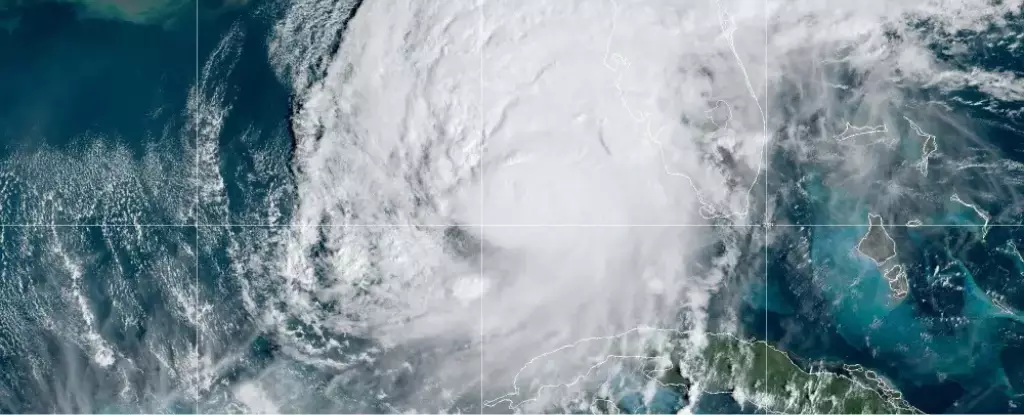After an anomalously tranquil August, the Atlantic hurricane season is stirring to life once again. The emergence of Hurricane Milton, now escalated to Category 4, is set to strike Florida on Wednesday night. This comes on the heels of Hurricane Helene, which wreaked havoc on the state just weeks before. With this rapid succession of events, experts are warning that Florida may not yet be out of the woods, indicating that additional storms could arise as the hurricane season unfolds.
As we step into October, scientists are keenly observing a shift in the tropical atmosphere that signals the potential for more storms. According to Kelly Núñez Ocasio, an assistant professor with Texas A&M University’s Department of Atmospheric Sciences, the remnants of the anticipated activity are likely far from over. “I wouldn’t be surprised if we see a few other storms forming before the season ends,” she stated emphatically, echoing a sentiment felt by numerous meteorological experts. Indeed, the National Oceanic and Atmospheric Administration (NOAA) had forecasted an unusually active season back in May, reiterating this prediction as August marked a period of apparent dormancy in storm activity.
The lull during late summer, characterized by a stretch where no named storms formed between August 13 and September 3, contrasted sharply with the earlier onset of violent hurricanes such as Beryl, Debby, and Ernesto. This paradox raises questions about the meteorological patterns at play during these months. It seems that while summer had momentarily quieted the waters, it may have simply been a prelude to the intensifying storm systems now making their presence felt.
Examining the meteorological phenomena contributing to these fluctuations, one must consider the role of La Niña and Africa’s monsoon season. During typical conditions, these patterns support a flourish of tropical storms. Yet, this year, the setup was anything but ordinary. Reports indicate that Africa’s monsoon season migrated northward into drier realms—less conducive to storm development. This unexpected shift may have significantly impacted the lower-than-anticipated storm counts during the summer months.
Matthew Rosencrans, NOAA’s lead hurricane season forecaster, pointed out that the La Niña phenomenon, often linked to favorable conditions for hurricane development, only recently signaled an increase in activity. This gradual ramp-up could have pivotal implications for tropical storm formation in the upcoming weeks. As the West African monsoon reverts to its typical position, the outlook for further storm systems intensifies.
One of the key areas of concern lies within the Gulf of Mexico, where the ocean temperature remains exceptionally high. These warm waters provide the essential fuel for hurricanes, facilitating rapid intensification, as evidenced by Hurricane Milton’s swift upgrade to Category 4 status. Stephanie Zick, an associate professor at Virginia Tech, underscores the critical importance of these warm conditions, noting, “The warmer the water, the faster these storms can intensify.”
As conditions shift within the Gulf toward the Caribbean, Rosencrans predicts that the trajectory for storm formations may also adjust southward. This potential shift in storm trajectories is corroborated by NOAA’s long-range forecasts, which suggest that more tropical activity may emerge in areas stripped of the typical mitigating factors that often inhibit cyclone development.
Looking ahead, concerns regarding climate change’s impact on storm formation and intensity become increasingly pertinent. A study co-authored by Núñez Ocasio highlights the consequences of rising moisture levels in the atmosphere and how they may influence the African monsoon and thus, the Atlantic hurricane patterns moving forward. While increased moisture typically correlates with heightened storm activity, the research indicates the possibility of an oversaturation tipping point—one that could disrupt traditional storm patterns.
With these pivotal observations in mind, the focus shifts towards preparedness. Núñez Ocasio articulated an essential viewpoint, stressing the imperative of readiness as we navigate through this ongoing hurricane season: “What we have to do is prepare, because in the end, what we do is to save life and property.”
As we draw closer to what appears to be a more active phase of this hurricane season, it is crucial for all affected regions to bolster their preparedness efforts. The combination of favorable weather conditions and unpredictable atmospheric patterns demands vigilance and proactive strategies to safeguard communities against the impending stormy outlook.

Leave a Reply